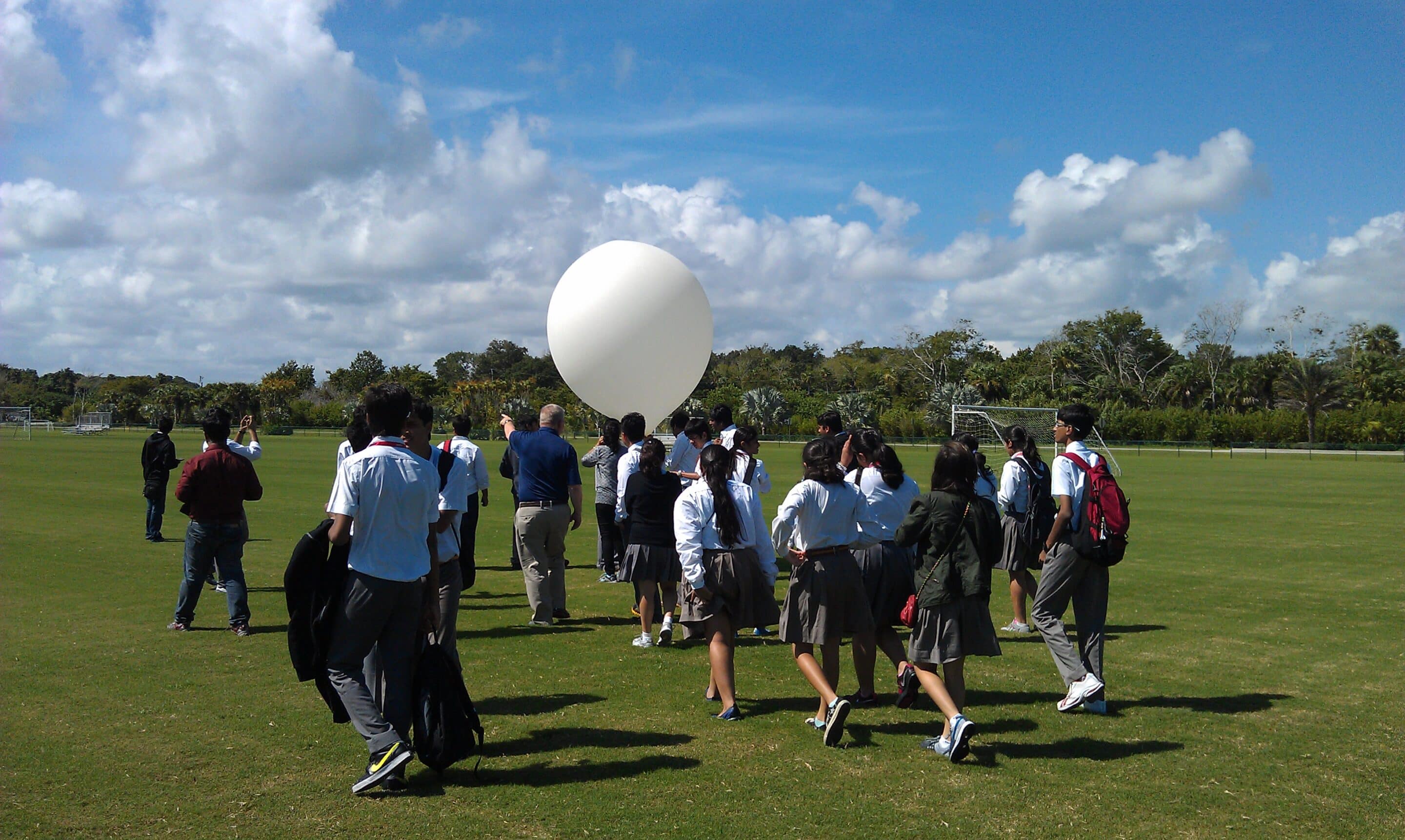I have launched over 100 weather balloons all over the United States. One of the factors I have noticed for how long the weather balloon stays in the air is related to how much lifting gas is used compared to the payload weight being launched; this also leads to the biggest mistake people make when launching weather balloons.
A weather balloon typically stays in the air for an average of two to three hours from lift-off to landing back on Earth. The weather balloon will typically ascend (go up) about 70% of the time until it bursts and starts descending (coming down) on a parachute for the remaining 30% of the flight time.
There are many factors that affect how long a weather balloon stays in the air. If you are planning on conducting a weather balloon launch and would like to recover your equipment, be sure not to make the #1 mistake I see many people make. This mistake leads to their weather balloon staying in the air longer than the average two-hour flight time and traveling hundreds of miles/kilometers from the launch site, making recovery difficult or impossible.
#1 Mistake When Launching a Weather Balloon
The most significant factor affecting how long a weather balloon will stay in the air is related to how much lifting gas, typically helium or hydrogen, is used for the amount of payload weight being launched. The lifting gas provides the upward force or propulsion to allow the weather balloon and payload to ascend into the atmosphere. This upward force is called “free lift,” the additional lift needed for a vertical flight of the balloon after the weight of the payload is lifted off the ground.
The “free lift” needed to achieve an average two-hour flight time for weather balloon payloads weighing 2-10 lb (1 to 4.5 kg) is 100% to 50% of the payload weight. You can think of “free lift” as a phantom payload, as it is just as crucial to planning how much lift gas is needed when adding up the weight of the weather balloon, payload, and “free lift” to determine how much lift gas is need for the launch. Without “free lift,” the balloon will not fly, and without the proper amount, the balloon will ascend very slowly, extending the flight time dramatically.
The biggest mistake people make when launching a weather balloon is not having enough “free lift” to attain an average vertical rate of 1000 ft/min (5 m/s). Typical, the mistake is made in underfilling the balloon with lift gas and having a suboptimal ascent rate, which could be 200 ft/min (1 m/s), leading the balloon to take 500% longer to reach burst altitude and traveling hundreds of miles/kilometers, risking the lost of the payloads.
How Weather Balloon Size Affects Time in the Air?
Another major factor in how long a weather balloon will stay in the air is the size of the balloon and the altitude achieved before the balloon bursts and descends back to Earth. For example, if a small weather balloon ascends at 1000 ft/min (5 m/s) and busts at 60,000 ft (18 km), it will take 60 minutes. However, if a large balloon is used, it could burst at 100,000 ft, taking 100 minutes before the balloon bursts for the same ascent rate and payload.
It is commonly accepted that a lightweight payload and a large balloon will achieve a higher altitude and longer flight time compared to a heavier payload with a smaller balloon. However, this increased altitude and flight time does not necessarily translate to an increase in the distance the weather balloon travels. This is because the extra flight time is added when the balloon is above the jet stream, which causes the majority of the horizontal travel.
How Weather Balloon Parachute Size Affects Time in the Air?
Another lesser-known effect of extending the time a weather balloon stays in the air is the size of the parachute compared to the payload weight. Just as with the weather balloon size, the larger the parachute size compared to the payload weight, the longer the payload will take to reach the ground. Below, you will find an example of how the parachute size affects not only the flight time of the payoald but also the distance traveled from the launch site:
- 36 inch Parachute – 5.5 lb Payload
- Descent Rate: 1926 ft/min
- Descent Time: 22 min (from 85,000 ft)
- Flight Distance: 60 miles
- 72 in Parachute – 5.5 lb Payload
- Descent Rate: 977 ft/min
- Descent Time: 42 min (from 85,000 ft)
- Flight Distance: 75 miles
When planning a weather balloon launch, we typically shoot to match a parachute to a payload to achieve a 1000 ft/min decent rate when landing back on Earth. This can be tricky if you are landing at higher elevations like Colorado or Wyoming, where the ground elevation is 5,000 ft above sea level.
What Are Other Types of Weather Balloons?
There are a few different types of weather balloons that Scientists can use to extend flight time in the air from hours to months. These weather balloons are not made of latex but are built using thin plastic film (thinner than a typical grocery bag). This category of weather balloons is not typically used by the public as the balloons are hundreds of times the cost of a latex balloon and require specialized equipment and training to operate.
- Zero Pressure Balloons
- Flight Time: Hours to Days
- Extending Flight Time: The balloon is open on the bottom to allow helium to escape, causing the balloon to maintain level flight at that altitude.
- Super Pressure Balloons
- Flight Time: Days to Months
- Extending Flight Time: The Super Pressure Balloons utilize ultra-strong plastic envelopes, which allow the balloon to maintain the lift gas density during day and night operations, which keeps the balloon from descending back to earth.
What is the Longest Weather Balloon Flight
The longest known weather balloon flight is just over 2 years (744 days) and was achieved in 1969 as a part of the Global Horizontal Sounding Technique (GHOST program). This program was conceived and run by Vincent Lally, who worked for the US National Center for Atmospheric Research (NCAR). Vincent and his team designed the first version of a Super Pressure Balloon, which flew a payload with some of the first solar cells and weather instruments to capture atmospheric data in the southern hemisphere. At the time, this technology was cutting edge, but satellites in orbit provided weather data, leading to this program’s decline and, along with it, small super-pressure balloon technology.



